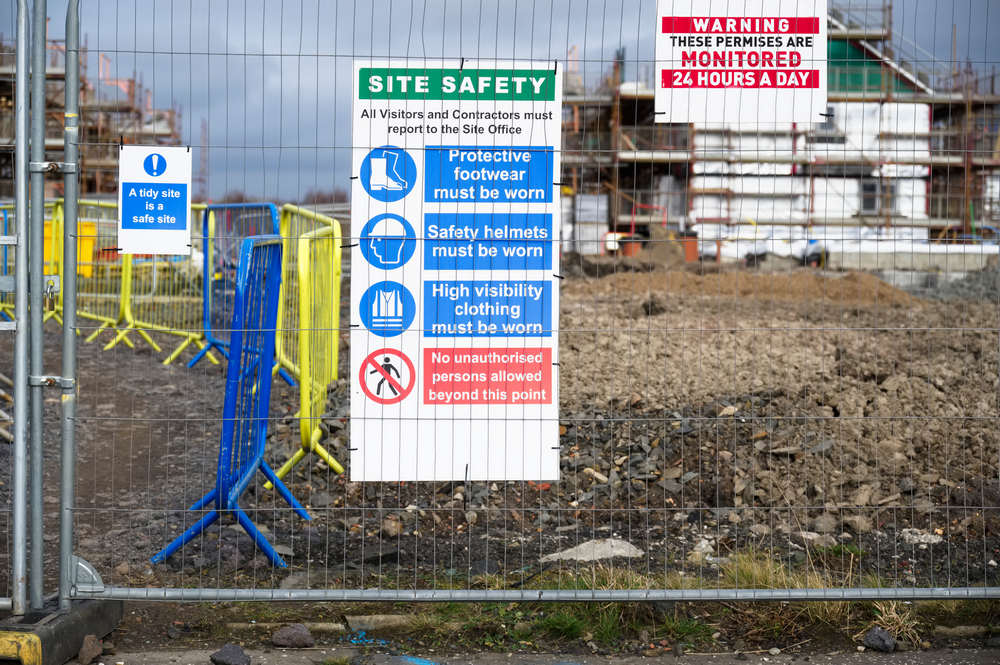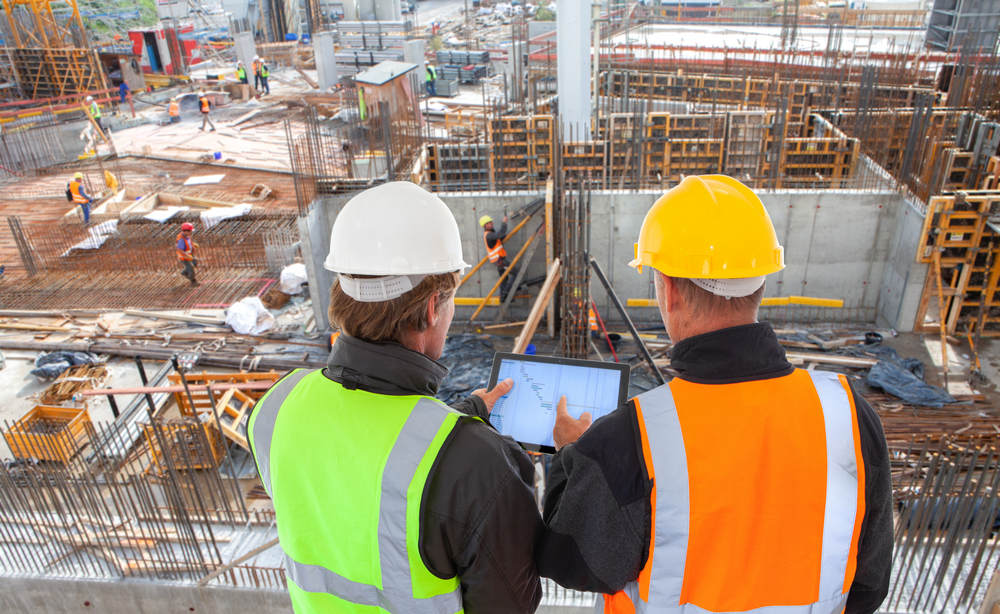The increasing pressure to meet quick deadlines makes construction safety best practices seem like a waste of time and money, but the opposite is true. According to OSHA, every dollar you invest in safety and health training saves you $4 to $6 in costs related to workplace injuries and illnesses. It starts with taking the lead and ensuring your workers know the best safety practices. Check out these 4 essential construction safety tips for contractors that help get everyone home to their families safe and sound at the end of each day.
Establish a Positive Safety Culture
Whether starting a safety program for the first time or renewing your efforts, creating standards and training procedures alongside building a safety culture is the best way to ensure everyone is safe on your job sites. A strong culture is the internal motivation and habits that unite your team. Culture develops even when you don’t try to shape it. If you neglect its importance, you may create a negative safety culture.
If you want your crew to think of safety as more than a list of dos and don’ts, safety must become a core part of who your team is. To proactively build a positive safety culture, you need a vision. Think about these four areas of culture:
- Attitudes: How do I want my crew to feel about safety initiatives?
- Values: How can I show that safety is a priority?
- Goals: How can we improve our safety program and reduce incident rates?
- Practices: What routines can we establish to ensure consistent safety?
Once you’ve decided on your desired attitudes, values, goals, and practices, you need to communicate that culture to your team. You want to make sure to talk about your safety standards in a positive light. Focus on the benefits your crew can gain from safety. Emphasize that you want everyone to get home safe to their families and instill a sense of responsibility for the safety of other people on the job site. Communicating the importance of your safety culture often increases the probability that your employees will follow it and that everyone will remain safe while on the job.
Make Use of Safety Training Resources
Safety training can benefit new hires and even the most experienced workers. OSHA offers online, state-specific safety courses that your workers can complete, so it’s easy to share safety practices and training. These courses will introduce new hires to your safety culture and practices, and your seasoned employees will receive a refresher on the knowledge they’ve acquired since being on the job. The courses are available 24/7, so you won’t need to rearrange your work schedule around them. Don’t forget about equipment-specific training. Follow all the manufacturer’s guidelines and check if equipment training is available.
Giving a group toolbox talk every day reminds your crew about construction safety tips. Here’s a list of toolbox talks that are available from OSHA:
- Personal protective equipment
- Hazard communication
- Fire protection and prevention
- Lockout/Tagout
- Portable tool and equipment safety
- Ladder safety
- Basic electrical safety
- Basic scaffold safety
- Trenching and excavation safety
- Fall protection and prevention
- Biohazards and infectious disease prevention
Invest in the Right Gear and Supplies
If you want your workers to follow safety practices, you should equip them with the necessary tools. Workers who don’t have the right safety gear and supplies are at higher risk of injury. Here are some general resources that contribute to worker safety and why they’re important:
- Communication devices (smartphones, hand radios, etc.): Awareness of what’s happening on the job site is key to preventing accidents. And if a safety incident does happen, communicating about it as soon as possible is very important.
- Proper personal protective equipment (PPE): High-quality and high-visibility PPE can mean the difference between life and death. It is also important to properly maintain all equipment and gear because malfunctioning equipment can be a safety hazard all on its own.
- Safety signage: Signs communicate safety hazards to workers and anyone else who may visit the job site.
- Emergency response materials: Create a plan with how you’ll handle injuries, illnesses, and other safety emergencies so you’ll be ready when they happen.
- Water: Remember to stay hydrated all year long.
- Rest areas: Reserve spaces where workers can warm up, cool off, and stretch safely.

Enforce Your Safety Program
You’ll need to follow through on the safety standards you’ve established. Once you’ve prioritized building a safety culture and created one, you’ll empower your team to hold themselves accountable. Here are some tips for ensuring construction safety remains a priority:
- Encourage workers to speak up: Your crew members should feel comfortable approaching you with any safety concerns without worrying about how anyone will respond.
- Provide employee feedback: Approach improvements in a constructive way.
- Supervise closely: Supervisors must be willing to enforce safety standards and promote accountability among crew members.
- Investigate and record incidents: Follow OSHA laws for reporting and recordkeeping.
Leading by example is perhaps the most important safety tip. Show your workers you’re invested in their safety by following your safety guidelines and reward those who demonstrate good safety behaviors. We hope these 4 tips can help you develop safety guidelines that ensure your workers are safe on every job site. When your employees know you’re truly committed to job site safety, they’ll be more inclined to trust you and follow your example. If you need safety equipment to help bring your safety culture to life, Extreme Safety has all the equipment and resources you need. Call us at (310) 856-0166 or visit our website.


















